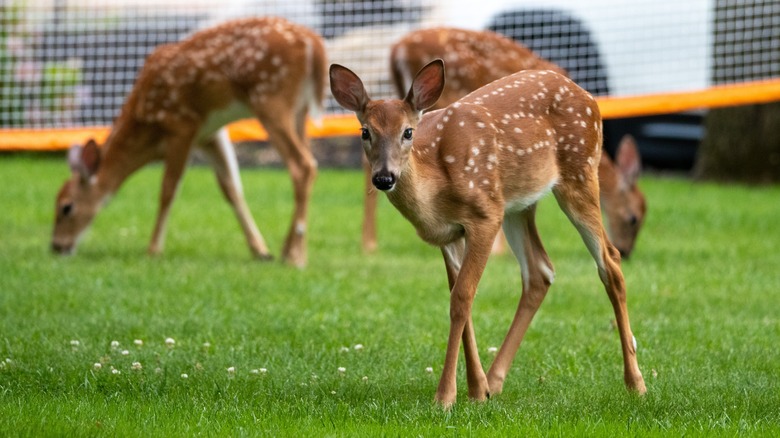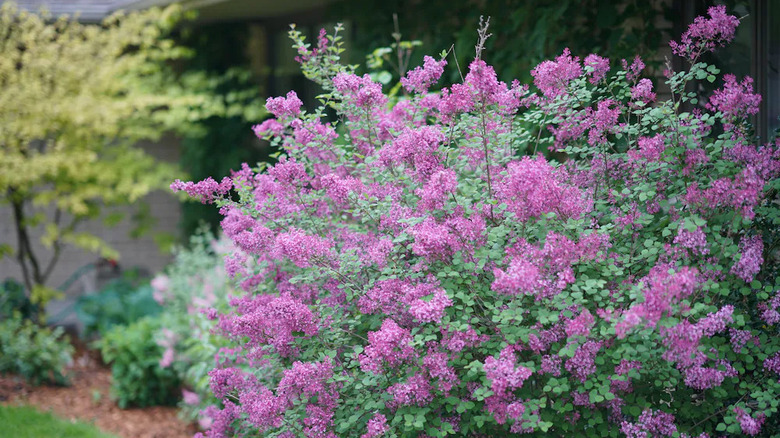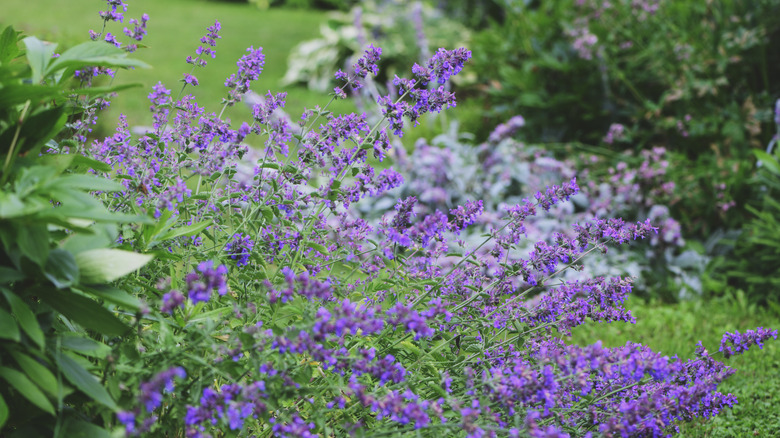This Deer-Resistant Tree Blooms Twice A Year And Makes Any Yard Smell Heavenly
We may receive a commission on purchases made from links.
Few things are as frustrating for garden lovers as doting over a beautiful backyard only to have it damaged by deer. If you live in an area where these cute but pesky creatures are likely to enter your garden, consider deer-resistant shrubs like boxwood and juniper, and ground covers like bunchberries. There are plenty of other plants to choose from as well, but not all are suitable for every environment. For anyone in the Midwest, Northeast, or Pacific Northwest where temperatures dip greatly in the winter, one fantastic option is the Bloomerang lilac tree. Also called a reblooming lilac or Syringa 'Penda' BLOOMERANG, this is a relatively new variant that made its debut back in 2009. What makes it truly exciting is that, unlike traditional lilac trees, it has been engineered to bloom twice and smell great each time. The fragrant four-petaled flowers will first show up in the spring (around May), then again in the summer (starting in July).
In addition to their aesthetic beauty, Bloomerang lilac trees are resistant to deer, give off a sweet lilac scent that attracts butterflies and hummingbirds, and have a great compact size. Because they only grow to be 4 to 6 feet tall and wide, they can fit in and brighten up pretty much any sized yard. Here's how to plant Bloomerang lilac trees the right way.
How to grow and care for Bloomerang lilac trees
Bloomerang lilac trees like the cold — a lot. In fact, they'll struggle to develop buds unless they've gone through a period of cold weather. This means they're an ideal option for gardeners living in zones 3 to 7 on the USDA Plant Hardiness Zone map. These deer-resistant plants can be planted any time of the year, except during winter when the ground is too hard, and should be placed in an open area of your yard. That's because Bloomerang lilac trees need at least six hours of direct sunlight a day and too much shade will mean fewer flowers. In terms of soil, it should be neutral to slightly alkaline, meaning the pH should never dip below 6.5.
As for maintenance, the trees will need regular watering every 10 to 14 days immediately after planting. Then, once they're established and the first growing season has come and gone, Bloomerang lilac trees will be okay with short periods of dry weather. Ideally, though, they should get at least 1 inch of water per week and the soil should be kept well drained but moist (never soggy). A bit of mulch on top of the ground can help retain the perfect level of moisture. And that's really the only thing you'll need to keep an eye on, as fertilizing and pruning are not required.
What to plant alongside your Bloomerang lilac trees
Choosing a mix of companion plants is a great way to diversify your garden. Bloomerang lilac trees are available in pink and purple varieties and you can easily complement them with some similarly hued plants that are equally deer-resistant. First, there's Nepeta 'Cat's Pajamas' (commonly called catmint), which is easy to grow and enjoys plenty of sunshine and well-drained soil, just like the Bloomerang lilac. Its flowers are lavender-blue, so they'll pair nicely with your lilacs while giving off a fresh minty fragrance. What's more, growing this aromatic herb will attract pretty butterflies to your garden while keeping deer at bay. Staying in the same color family, you can also mix in some Iris 'Caesar's Brother' (or Siberian iris), which blooms in a rich purple hue. Again, this varietal thrives in the same conditions as the lilac trees and is unattractive to deer.
Finally, consider adding the Polygonatum 'Prince Charming' (or Solomon's seal). Encompassing 60 different species, this perennial is a member of the lily family and features long, upright stems covered in zig-zagging leaves that can add volume and visual interest to your design. However, unlike the two companions above, Solomon's seal enjoys partial or full shade, so you'll need to keep that in mind while planning your garden layout.


